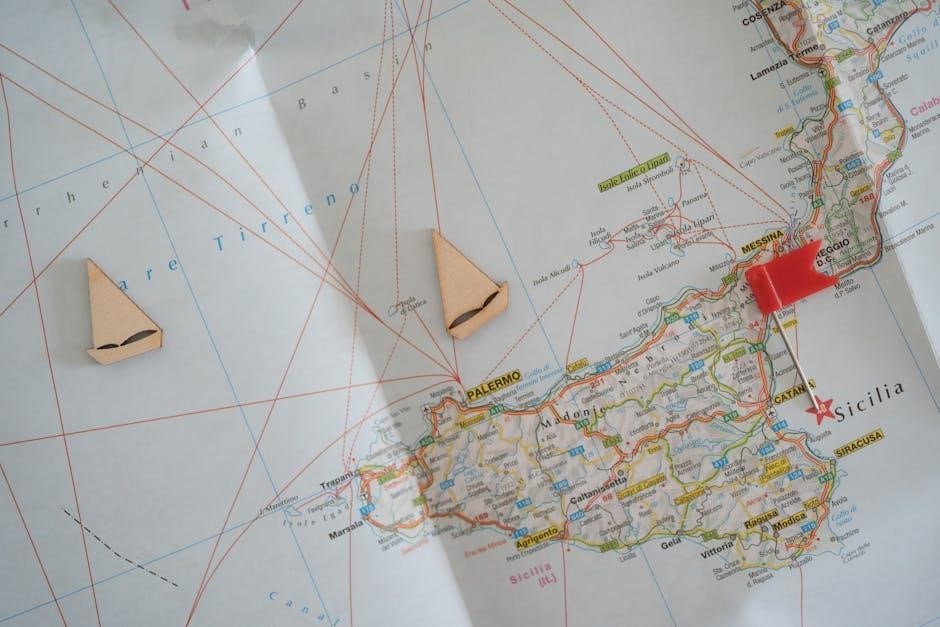
deathwalker guide
The Deathwalker is a versatile assassin-type character in Frosthaven, excelling in both melee and ranged combat. This guide explores their strengths, build paths, and strategic tips to master their unique abilities and dominate the battlefield.
1.1 Overview of the Deathwalker Class
The Deathwalker is a versatile assassin-type character in Frosthaven, known for their agility and lethal precision. With a low health pool of 6 HP at level 1, they rely on shadows and stealth to outmaneuver foes. Their 11-card hand allows for strategic card management, enabling high damage output and mobility. Immune to retaliate attacks, the Deathwalker excels in both melee and ranged builds, making them a formidable opponent in various combat scenarios.
1.2 Importance of the Deathwalker in Frosthaven
The Deathwalker is a pivotal class in Frosthaven, offering high damage output and versatility in both melee and ranged combat. Their ability to manipulate shadows makes them immune to retaliate attacks, providing a unique advantage. With a low health pool, they rely on strategic positioning and evasion, making them a challenging yet rewarding character to play. Their role in team composition is crucial, as they excel at controlling enemy movements and dealing decisive blows, making them a key asset in any party setup.

Core Mechanics of the Deathwalker
The Deathwalker relies on an initiative system, managing a unique card hand that balances offense and mobility. Shadows play a key role in combat, enabling stealth and evasion, while positioning is crucial for maximizing damage output and avoiding retaliation.
2.1 Initiative System and Card Management
The Deathwalker thrives in Frosthaven’s initiative system by leveraging their 11-card hand to control the flow of combat. Managing cards effectively is crucial, as it allows for strategic timing of attacks and abilities. The initiative system rewards players who balance aggression with utility, ensuring the Deathwalker can adapt to evolving battlefield conditions. Proper card management also enhances the synergy between shadows and mobility, making the Deathwalker a formidable opponent in both melee and ranged engagements.
2.2 Understanding the Deathwalker’s Card Hand
The Deathwalker’s 11-card hand is a cornerstone of their playstyle, offering flexibility in both combat and strategy. This larger hand size allows for diverse card combinations, enabling the Deathwalker to adapt to various situations. Players can mix melee-focused cards with ranged attacks, creating a versatile arsenal. Managing this hand effectively is key to maximizing the Deathwalker’s potential, ensuring they can execute their assassin archetype efficiently and maintain control over the battlefield dynamics.
2.3 Role of Shadows in Combat
Shadows are a defining feature of the Deathwalker’s combat strategy, enabling them to engage enemies without needing to move. This mechanic allows the Deathwalker to remain immune to retaliate attacks, making them highly effective in both melee and ranged builds. Shadows also enhance mobility and positioning, letting the Deathwalker strike from unexpected angles. Properly utilizing shadows is crucial for maximizing damage output and maintaining a strategic advantage in combat, making them a cornerstone of the Deathwalker’s playstyle.
2.4 Mobility and Positioning
The Deathwalker’s mobility relies heavily on shadows, allowing repositioning without physical movement. This mechanic enables evasion of retaliation and strategic attack setups. Positioning is crucial for maximizing damage output while minimizing exposure. Players should leverage shadows to maintain optimal distance, especially in melee builds, to avoid taking unnecessary damage. Proper positioning enhances survivability and effectiveness in combat, making it a cornerstone of mastering the Deathwalker’s playstyle.

Strengths and Weaknesses
The Deathwalker excels at high damage output and versatility but suffers from a low health pool, making survival challenging without proper positioning and shadow management.
3.1 High Damage Output and Versatility
The Deathwalker excels in dealing high damage through both melee and ranged attacks, making them a versatile assassin. Their ability to tag enemies with shadows allows for consistent damage output. Melee builds leverage cards like Shadow Step for close-range devastation, while ranged builds utilize Anger to poke enemies from a distance. This adaptability ensures the Deathwalker can thrive in various combat scenarios, making them a formidable opponent in Frosthaven.
3.2 Low Health Pool and Vulnerability
The Deathwalker’s low health pool, starting at 6hp, makes them highly vulnerable in prolonged combat. Their reliance on shadows for mobility and damage amplifies the risk of taking direct hits. Players must prioritize evasion and strategic positioning to avoid excessive damage. Despite their high damage output, the Deathwalker’s fragility demands careful card management and timing to ensure survival. This vulnerability necessitates a cautious playstyle, focusing on quick, decisive engagements rather than enduring lengthy battles.
3.3 Immunity to Retaliate Attacks
The Deathwalker’s immunity to retaliate attacks is a unique advantage, allowing them to attack without fearing counterattacks. This ability enhances their role as an assassin, enabling them to strike and withdraw without penalty. By leveraging shadows, the Deathwalker can engage enemies without direct exposure, reducing vulnerability. This mechanic makes them highly lethal in skirmishes, as they can focus on dealing damage rather than defending. Mastering this ability is key to maximizing their effectiveness in combat scenarios.

Build Paths for the Deathwalker
The Deathwalker offers two primary build paths: the Shadow Step build for melee dominance and the Ranged Attack build for strategic poking and tagging enemies, utilizing key abilities like Anger for enhanced effectiveness.
4.1 Shadow Step Build (Melee Focus)
The Shadow Step build emphasizes aggressive melee combat, leveraging the Deathwalker’s mobility and shadow mechanics. Key cards like Shadow Step and Grapple enable quick repositioning and control. This build focuses on high damage output, with cards that synergize to maximize close-range effectiveness. Players should prioritize cards that enhance melee attacks and shadow generation, making the Deathwalker a formidable assassin in direct combat. This build is ideal for those who prefer fast-paced, aggressive playstyles.
4.2 Ranged Attack Build (Poking and Tagging)
The Ranged Attack build focuses on dealing damage from a distance, utilizing cards like Anger to tag enemies and generate shadows. This build emphasizes poking and controlling the battlefield without direct engagement. It relies on ranged attacks to create opportunities for shadow-based strategies, making it ideal for players who prefer a more tactical, less aggressive playstyle. The Deathwalker’s ability to attack from range while maintaining shadow generation makes this build versatile and effective in various combat scenarios.

Key Cards and Abilities
The Deathwalker’s key cards and abilities revolve around shadow manipulation and high damage output. Core cards like Anger and Shadow Step enhance mobility and tagging, while abilities like Stealth provide evasion advantages. Synergistic combinations maximize effectiveness in both melee and ranged combat scenarios.
5.1 Core Cards for Melee Builds
For a melee-focused Deathwalker, key cards include Shadow Step for initiating combat and repositioning, Anger to boost damage output, and Eviscerate for high-damage strikes. Relentless ensures sustained aggression, while Phantom Strike enhances mobility and attack potency. These cards synergize to create a formidable melee assassin, capable of devastating enemies quickly. Proper card management and shadow utilization are crucial for maximizing effectiveness in close combat scenarios.
5.2 Essential Cards for Ranged Builds
For a ranged Deathwalker build, focus on cards that enhance mobility and deal consistent damage from a distance. Anger and Shadow Step are crucial, allowing you to tag enemies and generate shadows without direct engagement. Swift Strike provides quick, precise attacks, while Phantom Dash enables repositioning. Grasping Shadows and Echoing Strike complement ranged play by extending shadow effects and amplifying damage. These cards ensure the Deathwalker remains a formidable threat while maintaining distance and control.
5.3 Synergistic Card Combinations
Combining Anger with Shadow Step allows for quick tagging and shadow generation, enhancing mobility. Pairing Swift Strike with Phantom Dash enables rapid, consecutive attacks while repositioning. Grasping Shadows and Echoing Strike amplify damage and extend shadow effects, creating a deadly rhythm. These synergies maximize the Deathwalker’s versatility, allowing for fluid transitions between offense and defense while maintaining pressure on enemies. Proper card sequencing is key to unlocking their full potential in both melee and ranged playstyles.
Advanced Strategies
Mastering the Deathwalker requires optimizing shadow management, card draw, and positioning. Use Shadow Step to control battlefield dynamics and maintain offensive pressure while minimizing exposure to retaliation.
6.1 Managing Shadows Effectively
Shadows are the Deathwalker’s bread and butter, enabling stealth and powerful attacks. Position yourself to create shadows near enemies, allowing you to strike from unexpected angles. Use ranged attacks to tag foes, generating shadows that enhance mobility. Maintain a strong shadow presence to avoid retaliation and sustain pressure. Effective shadow management is key to maximizing the Deathwalker’s assassin playstyle and outmaneuvering opponents consistently.
6.2 Using Stealth and Evasion
Stealth and evasion are critical for the Deathwalker, allowing them to avoid damage and set up lethal attacks. By staying out of enemy line of sight and utilizing shadows, they can reposition safely. Abilities like Shadow Step enable quick escapes or surprise engagements. Evasion tactics also complement their low health pool, making them harder to target. Mastering these strategies enhances their assassin-like playstyle, ensuring they remain a deadly, unpredictable threat on the battlefield while minimizing risks.
6.3 Optimizing Card Draw and Discard
Efficient card management is crucial for the Deathwalker. Focus on discarding lower-value cards to make room for high-impact abilities. Use Shadow Step strategically to maintain a strong hand. Timing card draws during combat ensures consistent damage output and control. Prioritize retaining key cards for synergistic combinations, enhancing both melee and ranged builds. This approach maximizes the Deathwalker’s versatility and lethality in various combat scenarios.

Progression and Leveling Up
Focus on early-game shadow mechanics and essential cards. Mid-game, enhance mobility and damage output. Late-game, optimize card synergies for maximum efficiency and battlefield control.
7.1 Early Game Priorities
In the early game, focus on building a balanced deck and managing your low health pool. Prioritize cards that enhance mobility and damage output, such as Shadow Step and Anger. Use shadows strategically to avoid retaliation and control enemy movements. Ensure you maintain a mix of melee and ranged attacks to adapt to different scenarios. Efficient card draw and discard management are crucial to sustain pressure without overextending. This foundation sets the stage for stronger builds in the mid-game.
7.2 Mid-Game Power Spikes
The mid-game phase unlocks critical power spikes for the Deathwalker, enhancing their lethality. Key card unlocks like Anger and Shadow Step significantly boost damage and mobility. Players can leverage improved shadow mechanics to outmaneuver enemies, while upgraded abilities like Stealth and Evasion increase survivability. This stage is pivotal for transitioning into a dominant force, as synergistic card combinations and optimized positioning amplify the Deathwalker’s impact in combat, making them a formidable assassin.
7.3 Late Game Optimization
In the late game, focus on refining your card deck and maximizing the Deathwalker’s mobility. Prioritize cards that enhance shadow mechanics and damage output. Ensure optimal positioning to avoid retaliation while dealing consistent damage. Manage your card draw effectively to maintain a strong hand. Synergize abilities for peak performance, leveraging stealth and evasion to outmaneuver foes. This phase demands precise strategy to capitalize on the Deathwalker’s strengths and secure victory.

Synergy with Other Classes
The Deathwalker excels in team compositions with support classes, leveraging their healing and crowd control to amplify damage output and survivability in high-stakes combat scenarios.
8.1 Team Composition Tips
The Deathwalker thrives in teams with support classes that can heal or provide crowd control. Pairing them with a healer ensures survival, while a tank can distract enemies. Their ability to tag enemies with shadows makes them a great asset when combined with classes that trigger shadow effects. Balancing the team with ranged and melee attackers enhances versatility, allowing the Deathwalker to focus on high-damage, strategic plays without being overwhelmed.
8.2 Combining Deathwalker with Support Classes
The Deathwalker excels when paired with support classes that enhance their mobility and survivability. Healers like the Chaplain or Scholar can mitigate their low health issues, while debuffers like the Warlock or Diviner can weaken enemies, making it easier for the Deathwalker to land critical hits. Additionally, classes with crowd control abilities can set up enemies for the Deathwalker’s devastating shadow-based attacks, maximizing their effectiveness in combat. This synergy makes the Deathwalker a high-risk, high-reward asset in team compositions.
- Healers: Counteract low health with consistent healing.
- Debuffers: Weaken enemies to amplify Deathwalker’s damage.
- Crowd Control: Set up enemies for swift elimination.
This combination ensures the Deathwalker remains a formidable and sustainable threat on the battlefield.
Countering the Deathwalker
Exploit the Deathwalker’s low health with direct damage and area effects. Disrupt their shadow mechanics to limit mobility and attack opportunities, forcing them into vulnerable positions.
- Target their low health pool with burst damage.
- Use abilities that disrupt or block shadow movements.
- Focus on area denial to restrict their positioning.
Neutralizing their shadows and mobility is key to countering their effectiveness in combat.
9.1 Exploiting the Low Health Pool
The Deathwalker’s low health pool (6hp at Level 1) is a critical weakness. Opponents can target this vulnerability by focusing attacks early in combat. Their reliance on shadows for mobility makes them susceptible to direct damage. Timing attacks during their melee commitments can quickly deplete their health. This strategy forces the Deathwalker to play defensively, reducing their offensive potential and making them less effective in combat scenarios.
9.2 Disrupting Shadow Mechanics
To counter the Deathwalker, focus on disrupting their shadow-based abilities. Use abilities that reveal or block shadows, limiting their mobility and stealth. Environmental hazards can also neutralize their shadow movement. Forcing the Deathwalker into direct combat without shadow cover makes them vulnerable, as they rely on shadows for evasion and positioning. Targeting their shadow generation can significantly reduce their effectiveness in battle.
Community Resources and Guides
Explore the Deathwalker’s potential with community guides, forums, and video tutorials offering in-depth strategies, card discussions, and optimal build paths for both melee and ranged playstyles.
10.1 Recommended Forums and Discussions
Active discussions on forums like Frosthaven Subreddit and Board Game Geek offer valuable insights into the Deathwalker. Threads with over 170 votes highlight optimal builds and strategies. Veteran players share tips on managing shadows and card synergies. Video guides from experienced creators provide visual tutorials, while community polls reveal popular opinions on playstyles. Engaging with these resources can significantly enhance your understanding and mastery of the Deathwalker class.
10.2 Video Guides and Tutorials
Video guides provide in-depth insights into mastering the Deathwalker, showcasing build paths like the Shadow Step melee focus. Tutorials highlight strategies for ranged attacks, emphasizing cards like Anger for tagging enemies. Experts demonstrate how to manage shadows effectively and optimize card draw. These resources are invaluable for both new players and seasoned veterans, offering visual breakdowns of advanced techniques and class synergies. Community discussions often link these guides, making them easily accessible for further learning and improvement.
The Deathwalker is a versatile assassin-type character in Frosthaven, excelling in both melee and ranged combat. This guide explores their strengths, build paths, and strategic tips to master their unique abilities and dominate the battlefield;
11.1 Final Thoughts on the Deathwalker
The Deathwalker is a captivating class that blends stealth, versatility, and high damage output, making it a favorite for strategic players. While its low health demands careful positioning, the unique shadow mechanics and immunity to retaliate attacks offer significant advantages. With proper card management and build optimization, the Deathwalker excels in both melee and ranged roles. Despite its challenges, the class rewards skill and creativity, making it a compelling choice for those who enjoy mastering complex playstyles.
11.2 Encouragement for Further Exploration
The Deathwalker’s unique mechanics and versatility make it a rewarding class to explore. Players are encouraged to experiment with different builds and strategies to fully unlock its potential. Engaging with the community through forums and video guides can provide deeper insights and tips. Embrace the challenge and continue refining your skills to master this intriguing character.

Frequently Asked Questions
Common mistakes include poor shadow management and ignoring evasion. Tips for new players: focus on card draw, positioning, and understanding retaliate immunity to maximize effectiveness in combat.
12.1 Common Mistakes to Avoid
- Overextending in combat without proper shadow coverage.
- Neglecting to manage card hands efficiently, leading to suboptimal plays.
- Ignoring positioning, making the Deathwalker vulnerable to retaliation.
- Not prioritizing health management due to the low health pool.
- Overrelying on a single build path without adapting to situations.
- Failure to utilize synergistic card combinations effectively.
12.2 Tips for New Players
- Start with the Shadow Step build for easier melee combat.
- Focus on managing shadows to enhance mobility and damage.
- Use stealth mechanics to avoid taking unnecessary damage.
- Experiment with card synergies to optimize your playstyle.
- Upgrade your cards early to improve effectiveness in combat.
- Practice positioning to maximize your attack range and survivability.

Final Thoughts and Future Updates
The Deathwalker remains a dynamic, versatile class with immense strategic depth. Future updates may balance their low health pool, while community feedback continues to shape their playstyle.

13.1 Potential Balance Changes
The Deathwalker’s low health pool and shadow mechanics may see adjustments to improve survivability without reducing lethality. Possible changes include slight health increases or tweaks to shadow generation rates. Additionally, the immunity to retaliate attacks could be modified to apply only to specific enemy types. These changes aim to balance the class’s versatility while maintaining its unique identity as an assassin archetype in Frosthaven. Community feedback will play a crucial role in shaping these potential updates.
13.2 Community Feedback and Suggestions
The community actively discusses Deathwalker strategies on forums, with many praising its versatility. Players suggest balancing shadow mechanics and adding new card options. Tips for new players often emphasize mobility and card management. Some request more depth in character progression, while others highlight the class’s unique appeal. Feedback underscores the Deathwalker’s potential for creative builds. Share your experiences and stay tuned for updates to enhance your gameplay and explore new possibilities with this dynamic character.
Related Posts

webkinz gem hunt guide
Master the Webkinz Gem Hunt with expert tips, tricks, and secrets! Become a pro and uncover hidden gems faster than ever. Your ultimate guide to success!

tv guide pompano beach fl
Find the best TV channels, shows, and listings in Pompano Beach, FL. Your ultimate guide to entertainment. Tune in now!

vince camuto shoe size guide
Stop guessing! Our Vince Camuto shoe size guide makes finding your ideal fit a breeze. No more returns, just happy feet! Get it right the first time.